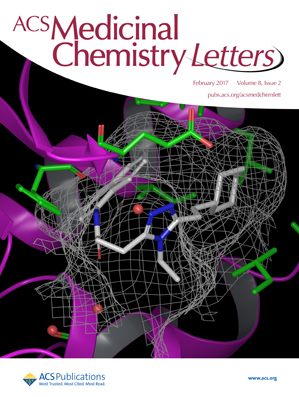GHz 光纤激光器中的动态增益驱动锁模。
IF 3.5
3区 医学
Q2 CHEMISTRY, MEDICINAL
引用次数: 0
摘要
超快激光器已成为各个领域的强大工具,而将其基本重复率提高到千兆赫(GHz)级别,则为前沿科学和工业应用带来了巨大潜力。在各种方案中,超短腔光纤激光器中的无源模式锁定因其简单性和鲁棒性而有望产生 GHz 超短脉冲(通常是孤子)。然而,它的脉冲能量远低于现有理论的临界值,导致 GHz 光纤激光器的锁模机制成为未决问题。在此,我们通过探索动态增益损耗和恢复(GDR)效应来研究 GHz 光纤激光器中的无源锁模,并建立了一个理论模型,以全面理解其多 GHz 基本重复率的低阈值锁模机制。具体来说,GDR 效应产生了一种有效的相互作用力,从而将多 GHz 孤子结合在一起,形成对应的孤子晶体。研究发现,由此产生的孤子集体行为可有效降低增益光纤的饱和能量,并使连续波模式锁定(CWML)的脉冲能量降低几个数量级。此外,还提出了一个定义在强相关长度上的准单一孤子的新概念,以深入了解孤子集合的动力学,从而实现从现有模式锁定理论到现有理论的交叉。具体地说,通过使用标准实时示波器和新出现的时间透镜放大镜进行测量,在锁模 GHz 光纤激光器中从理论上指出了分别呈现矩形和高斯形状包络的两种不同的 Q 开关锁模动力学,并在实验中进行了验证。基于所提出的 CWML 准则,我们最终实现了 GDR 介导的锁模光纤激光器,其基频重复率高达 21 GHz,信噪比高达 85.9 dB。本文章由计算机程序翻译,如有差异,请以英文原文为准。
Dynamic gain driven mode-locking in GHz fiber laser.
Ultrafast lasers have become powerful tools in various fields, and increasing their fundamental repetition rates to the gigahertz (GHz) level holds great potential for frontier scientific and industrial applications. Among various schemes, passive mode-locking in ultrashort-cavity fiber laser is promising for generating GHz ultrashort pulses (typically solitons), for its simplicity and robustness. However, its pulse energy is far lower than the critical value of the existing theory, leading to open questions on the mode-locking mechanism of GHz fiber lasers. Here, we study the passive mode-locking in GHz fiber lasers by exploring dynamic gain depletion and recovery (GDR) effect, and establish a theoretical model for comprehensively understanding its low-threshold mode-locking mechanism with multi-GHz fundamental repetition rates. Specifically, the GDR effect yields an effective interaction force and thereby binds multi-GHz solitons to form a counterpart of soliton crystals. It is found that the resulting collective behavior of the solitons effectively reduces the saturation energy of the gain fiber and permits orders of magnitude lower pulse energy for continuous-wave mode-locking (CWML). A new concept of quasi-single soliton defined in a strongly correlated length is also proposed to gain insight into the dynamics of soliton assembling, which enables the crossover from the present mode-locking theory to the existing one. Specifically, two distinguishing dynamics of Q-switched mode-locking that respectively exhibit rectangular- and Gaussian-shape envelopes are theoretically indicated and experimentally verified in the mode-locked GHz fiber laser through the measurements using both the standard real-time oscilloscope and emerging time-lens magnification. Based on the proposed criterion of CWML, we finally implement a GDR-mediated mode-locked fiber laser with an unprecedentedly high fundamental repetition rate of up to 21 GHz and a signal-to-noise ratio of 85.9 dB.
求助全文
通过发布文献求助,成功后即可免费获取论文全文。
去求助
来源期刊

ACS Medicinal Chemistry Letters
CHEMISTRY, MEDICINAL-
CiteScore
7.30
自引率
2.40%
发文量
328
审稿时长
1 months
期刊介绍:
ACS Medicinal Chemistry Letters is interested in receiving manuscripts that discuss various aspects of medicinal chemistry. The journal will publish studies that pertain to a broad range of subject matter, including compound design and optimization, biological evaluation, drug delivery, imaging agents, and pharmacology of both small and large bioactive molecules. Specific areas include but are not limited to:
Identification, synthesis, and optimization of lead biologically active molecules and drugs (small molecules and biologics)
Biological characterization of new molecular entities in the context of drug discovery
Computational, cheminformatics, and structural studies for the identification or SAR analysis of bioactive molecules, ligands and their targets, etc.
Novel and improved methodologies, including radiation biochemistry, with broad application to medicinal chemistry
Discovery technologies for biologically active molecules from both synthetic and natural (plant and other) sources
Pharmacokinetic/pharmacodynamic studies that address mechanisms underlying drug disposition and response
Pharmacogenetic and pharmacogenomic studies used to enhance drug design and the translation of medicinal chemistry into the clinic
Mechanistic drug metabolism and regulation of metabolic enzyme gene expression
Chemistry patents relevant to the medicinal chemistry field.
 求助内容:
求助内容: 应助结果提醒方式:
应助结果提醒方式:


